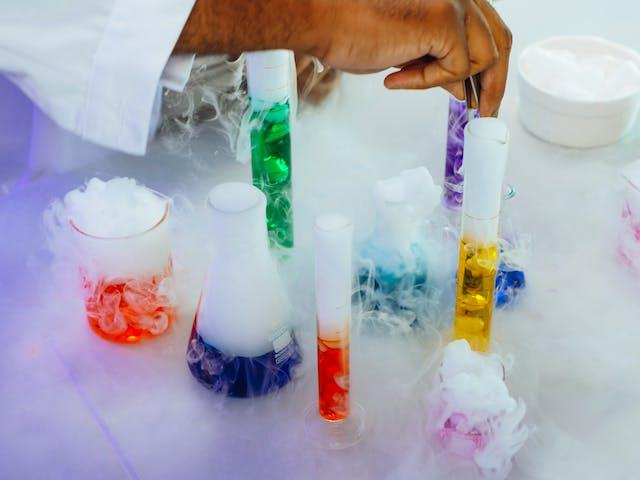Chemistry is one of the most difficult subjects to learn and understand because it requires a solid foundation of math, notably algebra, not to mention memorizing massive amounts of information. It’s often referred to as having its own language, allowing scientists to convey precise information about matter’s composition, structure, properties, and behavior. People can hardly imagine how chemistry affects their everyday lives; it’s a science for scientists, not the general public. Chemistry is often described as “methodical” and burdened with “concentration.” So, why bother to learn chemistry anymore? Chemistry offers a strong base for various careers, including medicine, pharmacy, engineering, and scientific research.
There are different ways to use social media outside the classroom and take control of your learning. It’s not just for vacation selfies and muffin recipes. Not only will using social media strengthen your skills, but it will also help you broaden your network. By resharing the practical resources you find on YouTube, say, you can find others interested in the same topics as you and even build a learning community. You can use YouTube videos to supplement your education or extend the knowledge gained from chemistry course materials; they provide 24/7 and self-paced learning opportunities, so you can pause and rewatch as needed.
YouTube Videos Make Great Learning Aids And Shouldn’t Be Overlooked
Customized videos facilitate the process of learning chemistry, making it exciting and understandable. They make studying more engaging, as well as simplifying complex notions like chemical bonding or the kinetics of reactions. Using YouTube can be helpful and fun, adding a dynamic element to your learning and improving knowledge transfer. You can take advantage of the seemingly endless opportunities to study chemistry fast and effectively and create your own clips to help your followers achieve their learning goals and objectives. YouTube can offer additional information, show real-world examples, and guide you through problem-based learning. Simply put, it’s a fantastic resource for learning new things.
YouTube channels can be used by both chemistry students and the general public. Maverick Puah, aka the Chemistry Guru, likes posting video clips on YouTube because knowledge is meant to be shared. Social media can be used as a means to improve your metacognition in chemistry and communicate with teachers about issues that might arise in the classroom. It helps release tension, especially if you’re worried about your drawbacks. Short, instructive films help those who need a little bit of help to pursue scientific interests, ensuring inclusivity for students with varying abilities. You can take your time with learning and redo it if you feel you need to learn more.
So, How Can You Use YouTube Wisely and Effectively?
A tool as powerful as YouTube requires its users to exercise caution to maintain a respectful online environment. If you’re a newbie learner in an area such as chemistry, you’ll most definitely appreciate the help of YouTube videos. Please continue reading to discover how to supercharge your studying and learning:
Use Playlists to Create Collections of Videos
YouTube makes it possible for you to create playlists of videos that are customizable, so you can expand your comprehension or gain more knowledge about chemistry. Science and education content are enjoying an upsurge of interest online, so you no longer have to study through formal education or trial and error. In other words, chemistry isn’t off-limits anymore to those who can’t take the time or expense of pursuing a degree. YouTube playlists automatically play in order, composed of similar or related videos. You can kick back and watch multiple clips in a row; it’s not necessary to search for them time and time again.
Take Advantage of Looper for YouTube
In case you didn’t already know, YouTube has a feature that lets you automatically loop videos. The clip gets to the end, after which it automatically replays, starting at the beginning again. At times, you might need to rewind a video to completely get it, so don’t waste your time manually repeating the clip. Using the YouTube Loop, you can loop videos to repeat in full or in part. It’s totally ad-free because including ads would interfere with the viewing of your selected videos. Attention must be paid to the fact that the loop feature only works if the video is long enough. For example, if the clip is only a few seconds long, you won’t be able to loop it.
Keep A Notebook Close By
Taking notes by hand helps with learning and the retention of information, meaning you’ll remember more and have a deeper understanding of the online material. The more videos you have in your learning collection, the harder it will be to remember what you’ve seen, so get into the habit of taking notes. Skip words that don’t add meaning to the lecture content, retaining only technical terms, and paraphrase what you hear, so it makes sense to you. With a note-taking app, you can start taking notes while watching your favorite clips. The process is done in the browser, so you don’t need to download any software.
Start Making YouTube Videos
Last but not least, participate in the online community by making and posting your own videos on YouTube. Developing personally and professionally entails acquiring knowledge, yet chemistry knowledge is only beneficial if you can put it to good use. Create videos for YouTube and invite your professor and peers to view, evaluate, and comment on them. It’s not hard to start a YouTube channel. A journey of helping thousands starts with a single view. Set a consistent publishing schedule and, above all, stick to it; once weekly may not be realistic for you. Consistency is more important than frequency.
Conclusion
To sum up, leverage the opportunity to learn new things and tackle chemistry in a completely different way by watching tutorials and how-to videos on YouTube. Ask friends or colleagues if they’re part of a learning or professional community that can help you. Just so you know, the most valuable groups are smaller.

